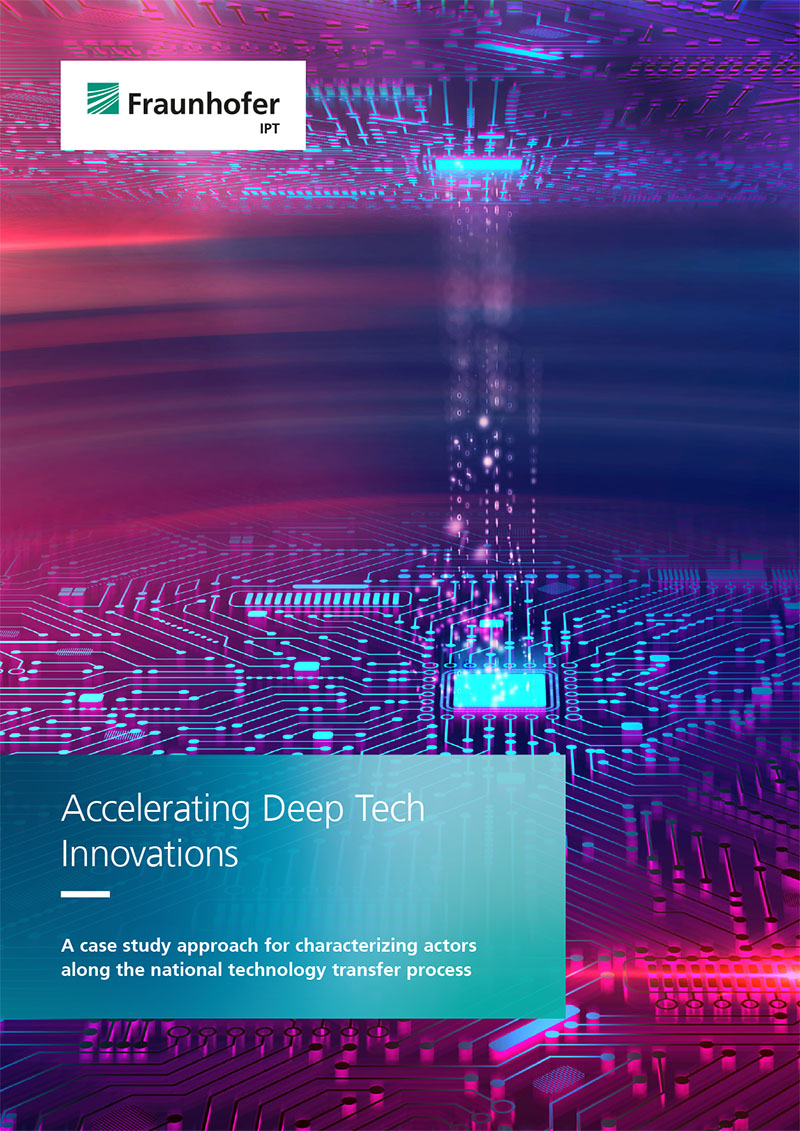Accelerating Deep Tech Innovations

Systemic innovation success in Europe lags behind its expectations as Europe spends most funding in basic research and development (R&D) while commercialization takes place in other regions such as the US or China. Therefore, this whitepaper aims to enhance the technology transfer for Deep Tech innovations in Europe through developing a framework for actors in Deep Tech ecosystems based on a case study analysis. For this, 25 actors from science and industry in three Deep Tech areas are analyzed – lithium-ion battery cells, semiconductors and electrolyzers. Based on a cross-industrial synthesis, recommendations for actions are derived building on the individual actors’ strengths and weaknesses.
As Deep Tech is considered a disruptive technology with a high degree of uncertainty regarding its actual feasibility, investments in such technologies are associated with high risks but great economic and societal opportunities. To benefit from such high-risk investments, it is mandatory that sufficient support is provided from research all the way to commercialization. This technology transfer includes both public funding of fundamental research and private funding for scaling and commercializing innovations. In addition to insufficient risk capital in basic research, however, a lack of consistent funding on the path from research to commercialization can be observed in Europe. This gap phenomenon between public and private funding is often referred to as the Valley of Death.
To foster the technology transfer for Deep Tech innovations, three needs for action are derived from the analyzed case studies: First, collaboration between actors should be strengthened to deliver Deep Tech innovations more effectively. Furthermore, a sufficient environment needs to be created in which the individual actors’ strengths complement each other optimally. Finally, protection spaces for intellectual property must be created to avoid legal disputes from the outset. By following these recommendations and taking the individual profiles of actors into account, the Valley of Death can be minimized.
Here you can download our white paper as a PDF free of charge.
We will be happy to inform you in the future as soon as new studies are published and send you further information on our research topics and our range of services on request.